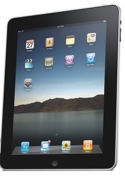Another day, another lawsuit — and this one sounds a little goofy, even by patent lawsuit standards. A company called Hopewell Culture & Design is suing Apple, Nokia, Samsung, Opera and Quickoffice for violating its patent (number 7171625) for clicking twice on an already-selected component to action a request for additional information or greater interactivity, reports “The Register” (http://macte.ch/PjSFA).
Yep, for double-clicking.
The patent was filed in 2002 and “enables a new type of interaction with content represented by an active visual display element in response to double-clicking a point-and-click user interface apparatus when the active visual display element is selected.”
Here’s the summary of the invention: “The invention enables a new type of interaction with content represented by an active visual display element in response to double-clicking a point-and-click user interface apparatus when the active visual display element is selected. The invention can be used to enable interaction with any type of content, such as, for example, a still image (e.g., a pictorial image), video, audio (e.g., music), text or a graphical display (e.g., a projection graph).
“The interactions can include any manner of making use of data representing the content, such as, for example, generating a display using the data, editing the data, analyzing the data, manipulating the data, selectively accessing the data, searching the data, and/or rearranging the data. The new type of interaction can be, for example, interaction with a new version of data representing the content (e.g., a version of data that represents the content or an aspect of the content with a different degree of detail), interaction in a new display window, interaction using a new computer program, and/or enablement of new functionality in the same computer program that enabled the original interaction. The invention can be implemented so that a cursor element that is positioned to select the active visual display element identifies the double-click capability of the invention. The invention can be implemented for use with a computer, television or other apparatus that makes use of a point-and-click user interface apparatus to enable user input.”
The lawsuit was filed in the US District Court for the Eastern District of Texas, the lawsuit capital of the world where, apparently, a lawsuit can be filed for any thing, no matter how ridiculous. The company seeks injunctive relief and monetary damages.
The accused products are Adobe Reader, iPhone, iPad, four Android-based HTC smartphones, two Android-based Motorola phones, two Nokia phones, the Opera Mini browser for mobile devices, the Palm Pre, the Quickoffice Connect Mobile Suite software, and two Samsung phones.
That’s almost certainly not going to happen. As the FOSS Patents web site (http://fosspatents.blogspot.com/2010/12/hopewell-culture-design-sues-apple-top.html) notes: “I wouldn’t be surprised if the defendants managed to present prior art. By the time the application was filed (mid 2002), graphical user interfaces already provided functionality that one could consider similar to this technique. This suit may make unlikely bedfellows in terms of companies suing each other over patents (Apple has disputes with Nokia, HTC and Motorola going) but possibly deciding to cooperate to invalidate this patent asserted against all of them and so many others. Prior art is always a difficult question of law whether there was still some inventive step involved that justified the grant of a new patent. That’s why most of the time I refrain from commenting on prior art questions at all unless they are raised in a substantiated form in official documents filed with courts.”
— Dennis Sellers




